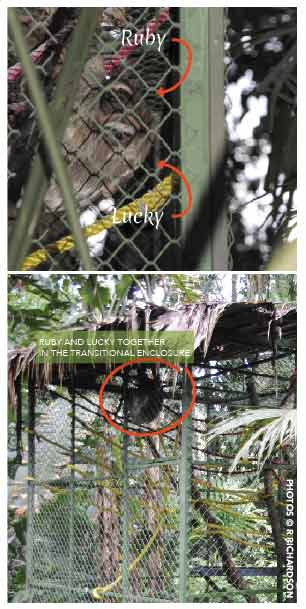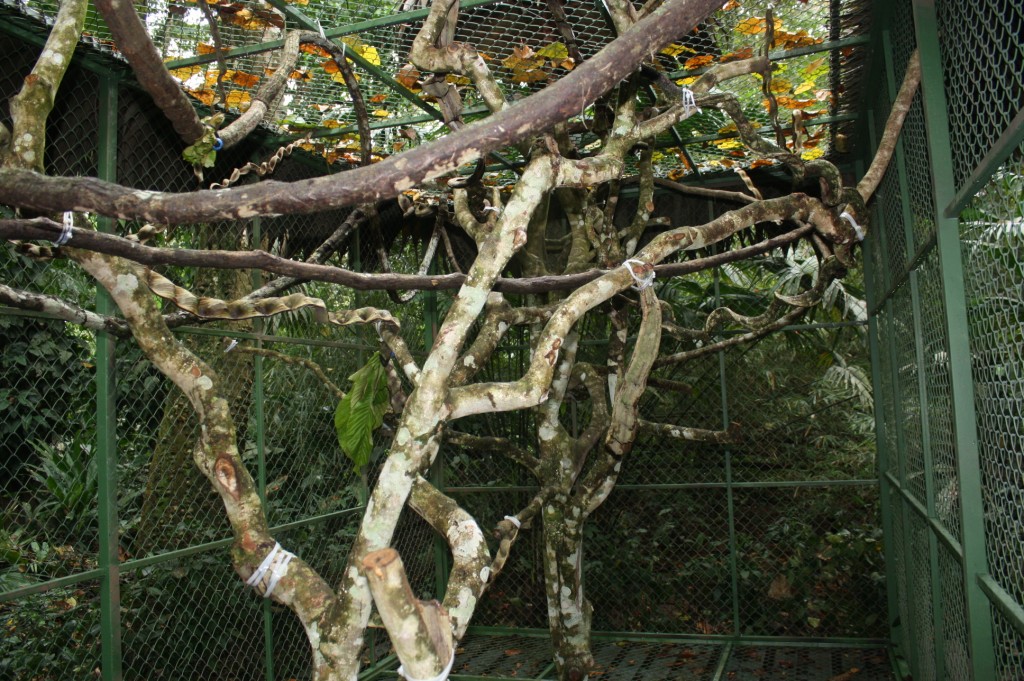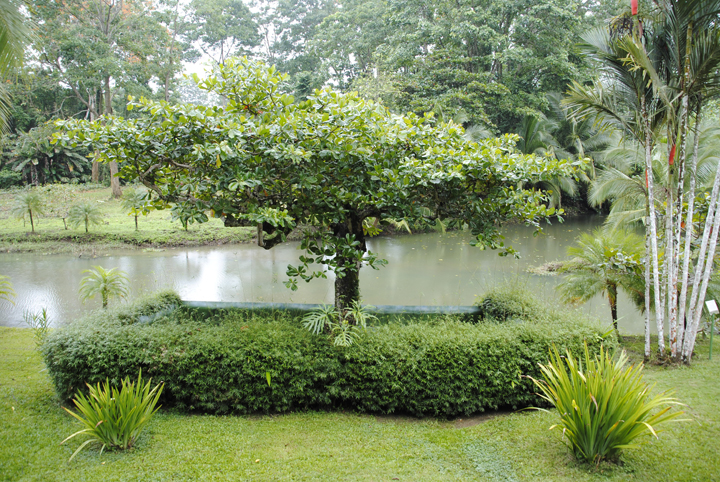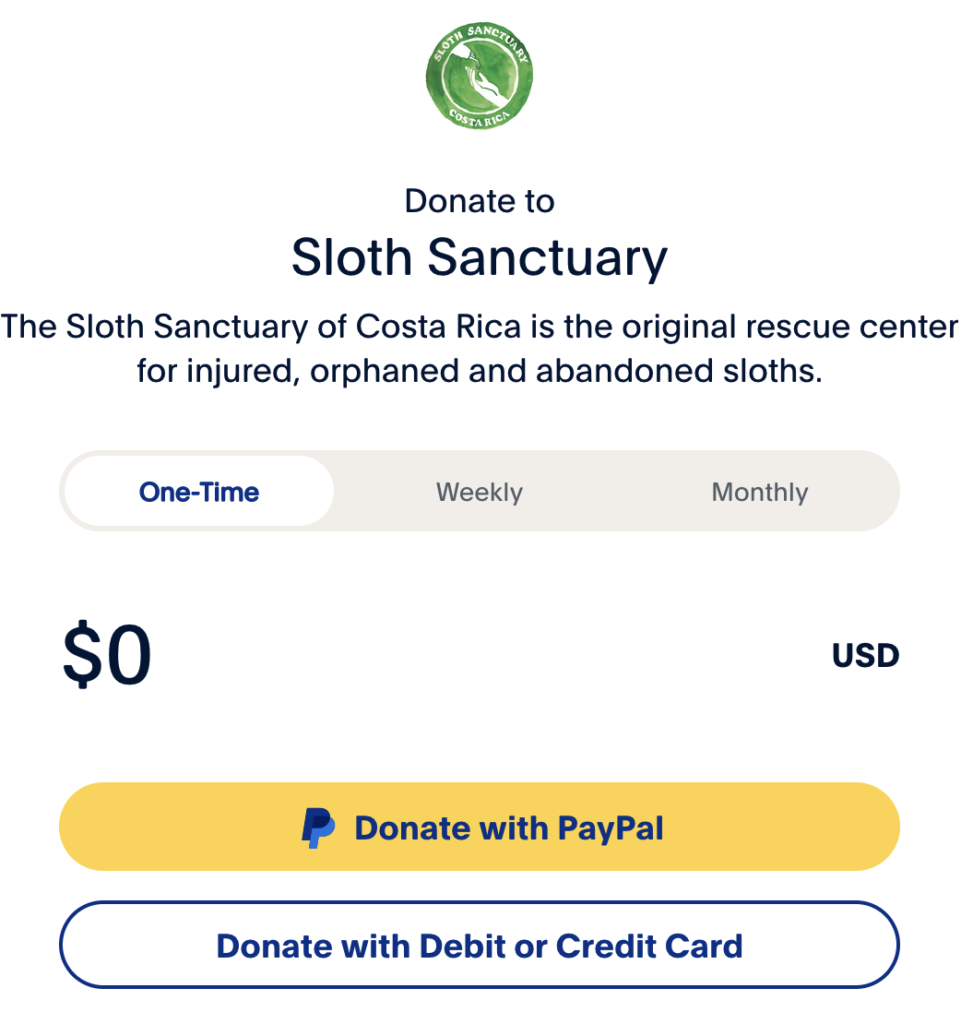Two of Judy’s grandsons saw a sloth fall from a tree into the middle of a road in Manzanillo. Stunned from the impact, the sloth lay motionless, a terrified baby still clinging to her chest. Thinking quickly, the young men hailed a taxi and rushed them to the Sanctuary clinic. An examination by veterinarian Dr. Francisco Arroyo revealed no broken bones, just some abrasions. The sloths were placed in the Sanctuary’s soft-release enclosure to recover under observation. This structure allows pre-release sloths to experience the sights and sounds of their natural habitat. They are also given cecropia leaf bundles that are monitored to ensure the sloths’ appetite is back to normal prior to release.
We named the mother Ruby and the baby Lucky and, after a few days of recovery, both were eating and climbing well. We released them at the location where they were originally found—although we took them further into the forest, far from the dangers of the road.
Transitional release enclosures
Located within the protected forested grounds of the Sanctuary, this enclosure is designed for three-fingered sloths at the midway point of their rehabilitation. All adult three-fingered sloths that are able to fully recover from their injuries are transferred to this enclosure before being released to the wild. This gives them the necessary time to readjust to the forest environment while we continue to monitor their behavior to ensure the rehabilitation program has been successful.
The second enclosure is specifically designed to meet the needs of rehabilitated two-fingered sloths. The enclosure surrounds a large almond tree (one of the sloths’ favorite leaves) at the front of the Sanctuary bordering the river. The structure is completely open which gives the sloths the ideal environment to adjust to the elements; plus, it is positioned so we can easily monitor the sloths’ progress.




